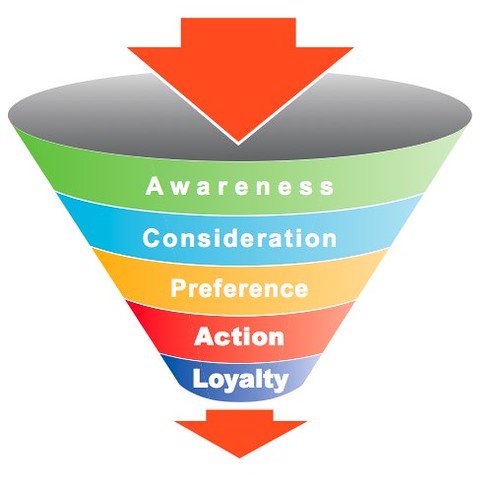Content marketing can only be effective if the content you’re producing is relevant and informative enough to attract your target audience and hold their attention. Relevance will most certainly depend on the specifics of your audience, which is why smart content marketers think in terms of audience segments. These might include the different roles, industries, and organizational sizes of your target audience members, for example. Those are fairly common ways of breaking your audience down. But one important way you may not have thought about segmenting your audience is by where they are in the buying cycle.

Every industry and offering has different wrinkles in their buying cycles, of course, but here are four fairly universal steps on the path your audience is probably walking, and against which you should be aligning content. For fun, let’s call these steps:
- Innocent Buystander (see what I did there?)
- Detective
- Judge
- Jury
(Apparently last weekend’s Law & Order marathon has done terrible things to my mind.)
The Innocent Buystander
As you’d guess, the Innocent Buystander is just getting started in his or her search, or may not yet have fully realized that a need exists in their organization. There’s not much you can do to attract folks like these, but that doesn’t mean you should forget about them completely. The most general information on your website, in your email marketing and in any industry speaking engagements can be helpful in attracting their attention. The key here is to think in broad terms. You can’t be all things to all people, so don’t try. But do be sure to cast a wide net.
The Detective
The Detective acknowledges that there is a need, and is looking into the options available. Unless you are the (nearly) undisputed leader in your field or a household name, don’t count on the Detectives even knowing you exist. You need to let them know you exist and give them a way to find you.
SEO to the rescue. Here’s where your content needs to be highly targeted to the keywords your audience is using when they search for the products/services you offer. You need them to find you so you can educate them.
The Judge
The Judge is one step further along, having acknowledged the need and begun researching the options. His or her next step is evaluating the best of the options. Your inclusion in the Judge’s short list will depend on how good a job your content has done to this point of educating the Innocent Buystander and the Detective to the value of your solution.
For this audience segment you have to up the ante in terms of the depth and quality of content you offer. The reason is twofold: first, they’ve grown increasingly sophisticated and well informed based on their research. And more importantly, they’re now a much more valuable audience segment. You want to get to know them better. But you won’t get them to take the next step in the relationship – letting you know who they are – if you aren’t offering content sufficiently valuable to get them to part with their contact information.
The Jury
Finally, we have the Jury. Whether it’s a jury of one or a committee of dozens, these are the decision makers you are ultimately courting. Your best bet here is to make this last stage of the process as easy and intuitive as possible. If you are selling lower-ticket items that can be purchased online, be sure that your checkout process is seamless and drop-dead simple. If you’re involved in more complex sales, be sure your content channels all make it incredibly obvious how a customer can reach out to the appropriate person to initiate the final sales process.
It can be difficult to know what stage website visitors might be at in the process, so it’s important to offer the range of content types on as many pages as possible. For email marketing, automation should make it easier for you to send follow up emails based on prior actions by the prospect – what they’ve viewed, what they’ve downloaded, etc.
Regardless of channel, thinking about your content marketing in relation to how your audience will interact with it is the key to staying relevant and informative and keeping your audience engaged until they’re ready to buy.







